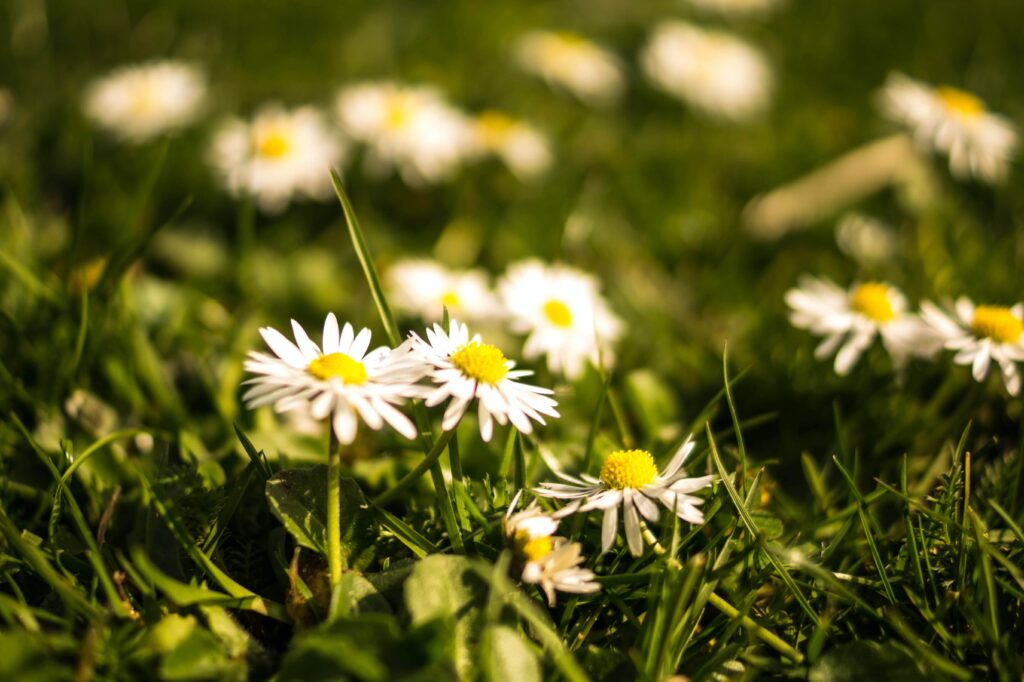Since the creation of AstroTurf in the early 60’s for purely sports purposes, fake grass has unfortunately crept its way into many urban gardens. Offering apparent convenience and low maintenance, it’s purported by its manufacturers to be the ideal garden solution – however, as we are about to discover, the (fake) grass is not always greener. (In fact – it never is).
Let’s dispel a few plastic grass myths.
1: It’s easy to maintain
Many people fall for fake grass by the promise that it will reduce the time they have to spend working on their garden and will have more time to simply enjoy being outdoors relaxing. However, this is not the case, with fake grass acting as an outdoor carpet – requiring regular leaf blowing, raking, even hoovering – not to forget, manufacturers advising bi-annual weed killing to keep any attempt at re-wilding at bay. As you’ll see in many nooks and crannies in brickwork, paving, virtually anything left for long enough, nature will have its way and yes, weeds grow on fake grass.
2: It’s great for children
It’s been shown in scientific immunology studies that playing in, and even eating soil has a hugely beneficial impact upon children’s microbiome. You may feel that you’re protecting them by giving them a fake-grassed garden, but you could in fact be reducing their chances of developing natural immunity. Further to this, fake grass heats up to double the temperature of natural grass in the summer, potentially causing burns. As well as these physical health issues, we can’t ignore the absolute joy that comes from exploring a garden – with REAL grass – picking daisies for chains, whistling with blades of grass, finding bugs in the soil – being outdoors in nature has a joyous effect on everyone’s wellbeing, and if we surround children with plastic then we’re stripping them of the chance to enjoy nature in their back garden.
3: It’s great for animals
You might be told fake grass is pet-friendly – but it’s not. Pet mess need cleaning and scraping and disinfecting, and can build up really nasty smells – which is why you can buy fake grass deodoriser. It’s horrifying that you’ll need to use more and more chemicals to keep your lawn clean and usable. There is a lot of money to be made by plastic grass manufacturers; for the cost of installing and maintaining a plastic lawn, (around £3000 estimated by the #TimeForTurf campaign) you could afford a gardener for around 12 years.
4: This isn’t really a myth buster but rather a complaint on how completely horrible fake grass is for our ecosystem. It’s produced overseas using fossil fuels, shipped over here using fossil fuels, strips away perfectly wonderful natural gardens, and replaces them with plastic. Then it requires chemicals to maintain, before requiring replacing in around 8 years, when the old grass gets thrown into landfill. There just isn’t any argument that can sustain the idea that plastic grass is a good thing – it’s not. It’s a terrible thing. At a time when it’s more crucial than ever that we rewild as much of our world as possible, we MUST turn our backs on fake grass and focus on developing our gardens, however large or small, to be havens of nature and wildlife. The more natural the garden, the less maintenance is required, and with new national schemes like #NoMowMay to encourage us to let our grass grow longer, it’s even becoming more socially acceptable. You can even buy signs that say “Pardon the weeds, we’re feeding the bees” which can be a friendly way of letting your neighbours know that you’re consciously rewilding your lawn. A delightful mini-meadow of bees, butterflies and wildflowers will be your reward.
Let’s ditch the fakery and allow nature to return to our outdoor spaces; children, pets, the natural world and hopefully, future generations will thank us for it.
It’s #TimeForTurf.

